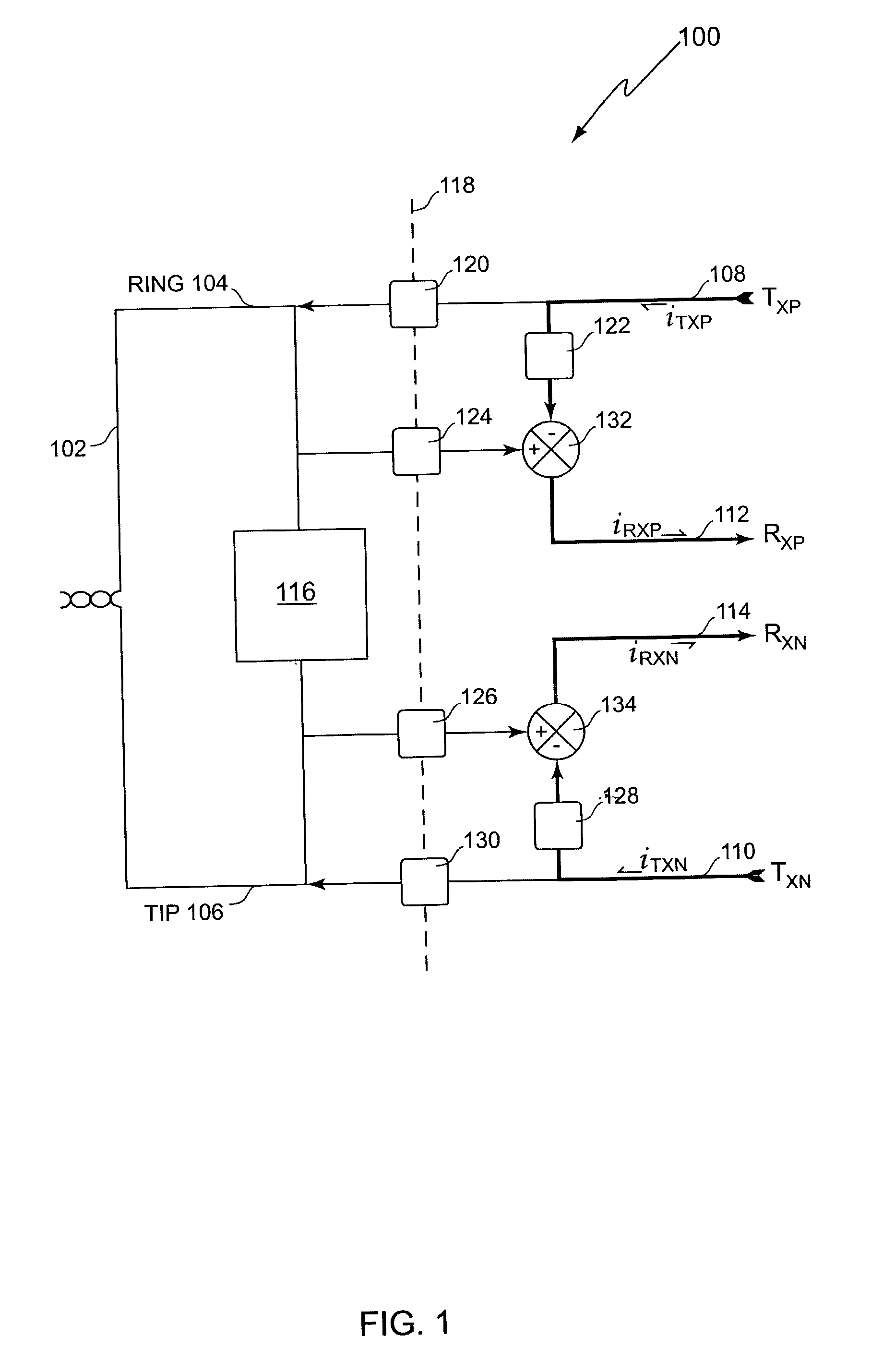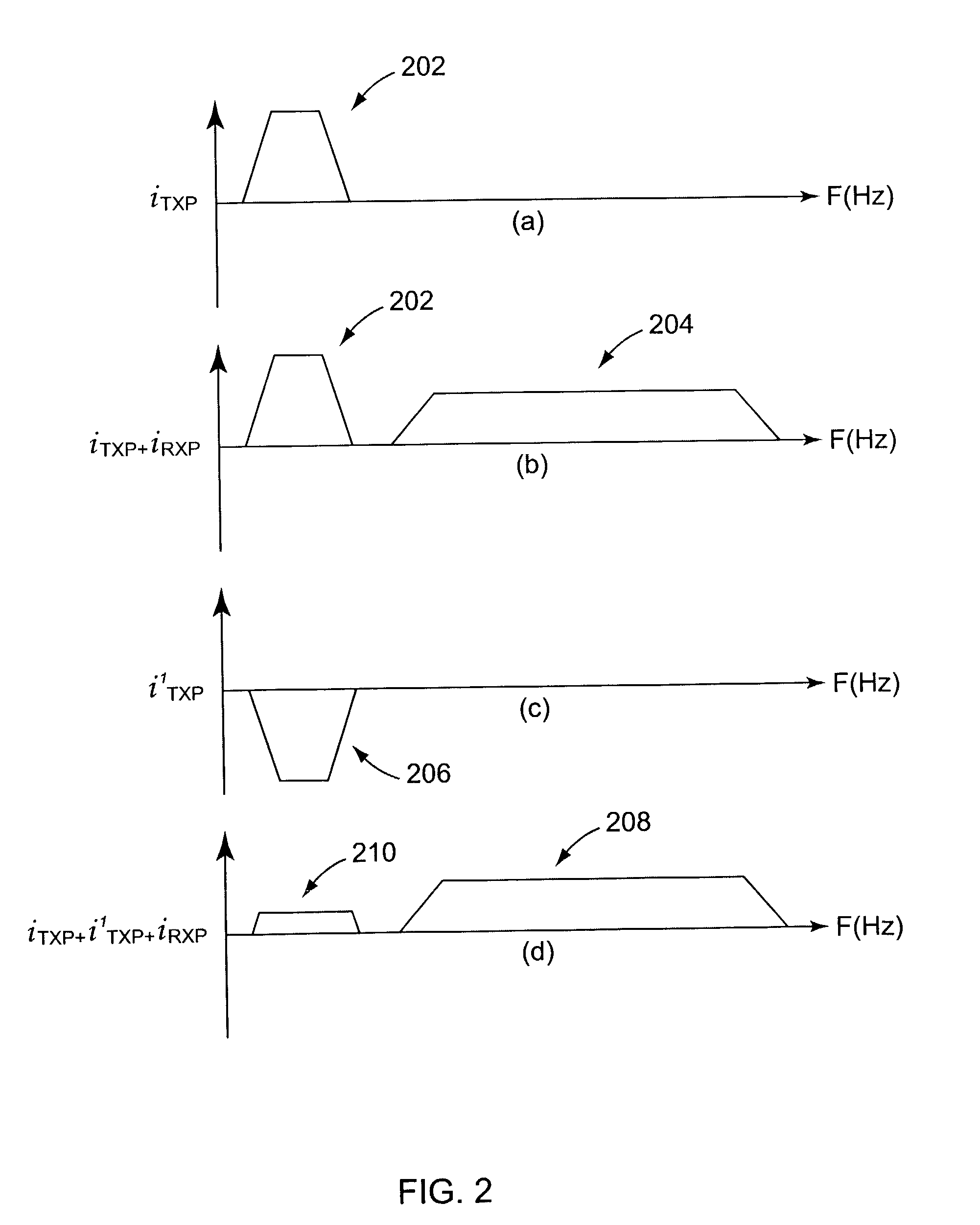Methods and apparatus for an ADSL transceiver
a transceiver and transceiver technology, applied in the field of hybrid circuits, can solve the problems of unsatisfactory adsl systems in a number of respects, current knowledge, and inability to design
- Summary
- Abstract
- Description
- Claims
- Application Information
AI Technical Summary
Benefits of technology
Problems solved by technology
Method used
Image
Examples
Embodiment Construction
[0018] Systems and methods in accordance with the present invention provide an ADSL transceiver hybrid circuit which includes one or more isolated couplers (optical couplers, capacitors, or the like) configured to minimize the transmit signal component in the receive signal path by providing an isolated transmit signal feedback. The resulting circuit is compact, efficient, and serves the required hybrid functions--i.e., echo cancellation and isolation--while at the same time eliminating the need for the complex high-pass filter required in conventional ADSL transceiver hybrids.
[0019] The transceiver and hybrid circuit of the present invention may be provided at one or more locations within the ADSL communication path. That is, the transceiver may be placed within the central office (often referred to the "ATU-C" modem in various ADSL specifications) and / or the customer's premises (the "ATU-R" modem). In this regard, those skilled in the art will recognize that a central office or cu...
PUM
 Login to View More
Login to View More Abstract
Description
Claims
Application Information
 Login to View More
Login to View More - R&D
- Intellectual Property
- Life Sciences
- Materials
- Tech Scout
- Unparalleled Data Quality
- Higher Quality Content
- 60% Fewer Hallucinations
Browse by: Latest US Patents, China's latest patents, Technical Efficacy Thesaurus, Application Domain, Technology Topic, Popular Technical Reports.
© 2025 PatSnap. All rights reserved.Legal|Privacy policy|Modern Slavery Act Transparency Statement|Sitemap|About US| Contact US: help@patsnap.com



